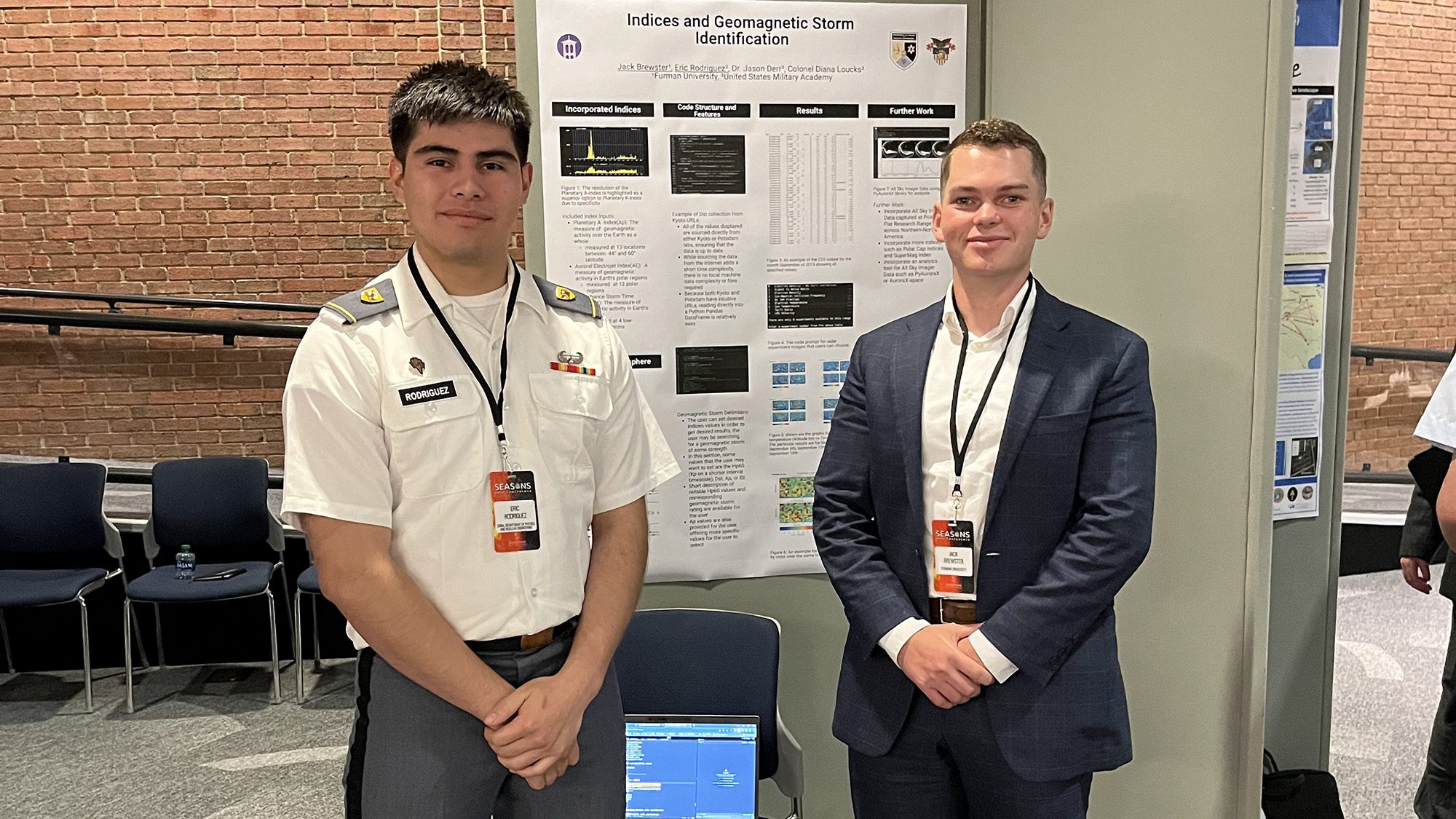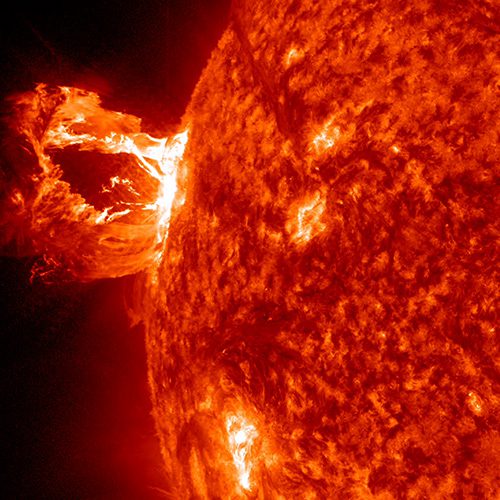Space weather forecasting could help prepare for solar storms, says senior

Every 11 years or so, the sun reaches the solar maximum, the most active part of its continuous cycle. Large sunspots appear, and solar winds and coronal mass ejections spew plasma into the Earth’s magnetosphere. Such geomagnetic storms can be devastating, like the Carrington Event in 1895 that lit up the skies and electrocuted telegraph operators across North America and Europe.

A solar storm erupted from the face of the Sun in April 2012. / Credit: NASA
It’s happening again, said Jack Brewster ’24. In early November, a geomagnetic storm classified as G3 on the five-grade scale used by the National Oceanographic and Atmospheric Administration’s Space Weather Center occurred.
“Going into a solar maximum, we’re going to get a lot more of these storms, G4 and G5 category,” said the ROTC cadet and physics and computer science double major. “Which is really when it’s time to start worrying. We have no way to mitigate these effects.”
Scientists predict the solar maximum to hit in 2025. If a G4 or G5 storm hits Earth, it could possibly have a significant impact on communication, temporarily disabling cellphone and satellite networks and wireless internet access, Brewster said.
The “Internet Apocalypse” could happen with less than a day’s warning, he said, which is why NASA and the Johns Hopkins University Applied Physics Laboratory, among others, are working on ways to improve space weather forecasting using big data.
After attending Army ROTC Advanced Camp in Summer 2023, Brewster got his hands on some of that data, collected from the Poker Flat Incoherent Scatter Radar installation in Alaska, during a space weather internship at the United States Military Academy at West Point. Working with West Point student Eric Rodriguez, Brewster saw the need to simplify the compilation of data that was siloed within separate systems.
“It’s really obnoxious, the way you have to go through six different websites to look for the data” on ionospheric activity, he said. “I thought, ‘We could really use some computer science on this, as well.’”
Brewster and Rodriguez worked 40 hours a week for five weeks during the summer. With the sponsorship of David Moffett, professor and chair of Furman’s physics department, Brewster was able to continue working on the project after the West Point internship ended. Collaborating online, the students developed code that could pull data from the disparate databases, compile it and export it in one file that researchers could then use to easily locate specific experimental information that could help forecast future solar activity.
In addition to the information from the Poker Flat installation, Brewster and Rodriguez plan to expand their project to include data from NASA’s network of All Sky Imagers across North America.
On Nov. 7 – just a few days after the G3 geomagnetic storm – the students presented their research poster, “Indices and Geomagnetic Storm Identification,” at the Space Environment Applications Systems and Operations for National Security conference at the Johns Hopkins University Applied Physics Laboratory.
“It’s pretty big in the space weather community,” Brewster said. “I shook some hands and made some connections” – including scientists from NASA, the Department of Defense, the lab at Johns Hopkins and other organizations.
One connection, with a representative from Blue Eye Soft, a company based in Greenville County, South Carolina, led Brewster to a job he’ll start in the spring, working on a space weather forecasting project.
This spring, Brewster will also receive his commission as a second lieutenant in the U.S. Army. He won’t know what branch he’ll join in active service until later this fall, but his preference is the Cyber Command – and, having been ranked as “most preferred” by the U.S. Army Cyber Command, his career forecast seems favorable.
Brewster’s story illustrates The Furman Advantage, an educational framework that provides every student an individualized educational pathway and opportunities for high-impact learning experiences, said Lt. Col. Sarah Whitten, professor of military science.
“For the past two summers, Cadet Jack Brewster chose to pursue academic internships and opportunities related to the space field,” Whitten said. “The culture of The Furman Advantage, focused on high-impact, engaged learning through research, set the stage for Jack to seek out unique and challenging opportunities that leverage his academic and military experience from his time at Furman.”